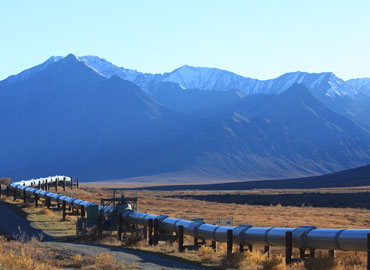Investing In Pipelines

Benefiting the Economy and Creating Jobs
Using pipelines for the movement of crude oil, NGLs, refined products, and natural gas greatly benefits the United States economy. Direct capital investments for the construction of new pipelines will average approximately $55 billion between 2014 and 2025, with more being spent between 2016 and 2020. This estimate considers a conservative path of oil and gas production during that time period. If access to off limit areas of production, like the Atlantic, the Eastern Gulf of Mexico, the Pacific, and Alaska, is granted, direct capital investments will increase and average around $65 billion between 2014 and 2025. Regardless of the amount of production, these direct investments will further elicit indirect investments from others in the supply chain, such as steel manufacturing and engineering companies. Wages provided to workers will also be used to purchase consumer goods and contribute even further to the economy. In the end, while the approximate direct investment value may be between $55 and $65 billion, more contributions to the economy are likely providing all the indirect factors that are a part of construction and maintenance of gas and liquid pipelines.
In addition to the financial impact of pipeline construction, employment opportunities will increase significantly. As many as 665,434 jobs could be created because of new pipeline projects, and this number doesn’t even include the resulting indirect jobs. These jobs will be dispersed throughout the US. As detailed above, if some of the currently off limit areas are open for production, the jobs amount could increase to 830,769.
In the above video, Interstate Natural Gas Association of America President Don Santa discusses the benefits of investing in pipelines, including improved pipeline safety and additional job opportunities for U.S. workers.
Employment Impact by Industry and U.S. Census Division
*The numbers provided above signify the amount of jobs created in each region due to the investment in pipeline infrastructure.
For a more detailed breakdown of the jobs created, the valued added to the GDP, and the labor income impact due to the capital invested, see the tables linked below:
GDP Contribution by Industry and US Census Division
*The numbers provided above show the amount of value added to the GDP in each region because of the investment in pipeline infrastructure.
Labor Income Impact by Industry and US Census Division
*The above table illustrates the labor income value in each region as a result of the investment in pipeline infrastructure.
Direct, Indirect and Induced Employment by US Census Division
*The chart provided above details the direct, indirect, and induced jobs created because of the investment in pipeline infrastructure.
Direct, Indirect and Induced GDP Contribution by US Census Division
*The above numbers show the direct, indirect, and induced value added to the GDP in each region due to investment in pipeline infrastructure.
Direct, Indirect and Induced Labor Income by US Census Division
*The table provided above reveals the direct, indirect, and induced labor income in each region because of the investment in pipeline infrastructure.

